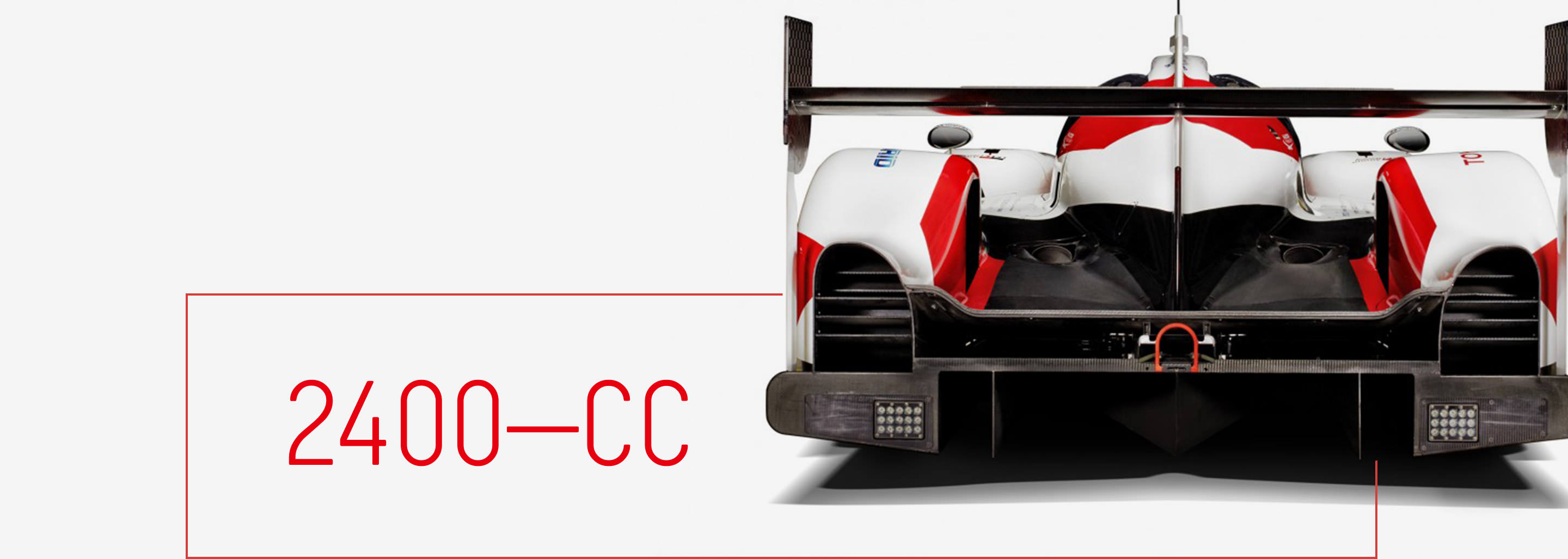TS050Hybrid
Introducing the TS050 HYBRID.
Full improvement TS050 HYBRID.
Ready for Le Mans.
The team has a clear target to earn its first Le Mans victory following an extraordinary near miss in 2016. That requires a combined effort at its technical centres in Higashi-Fuji and Cologne, with upgrades in every area of the TS050 HYBRID. The 2017 car features a 2.4litre V6 turbo-charged petrol engine combined with 8MJ hybrid system. Significant effort at Higashi-Fuji sees the introduction of a new engine, optimising thermal efficiency by increasing the compression ratio via development of the combustion chamber, cylinder block and cylinder head.

THE HYBRID SYSTEM HAS BEEN OPTIMISED TO THE UPDATED CHASSIS.
The hybrid system too has been optimised. Motor generator units (MGU) have been reduced in size and weight while the high-powered lithium-ion battery has been developed further. Those advancements in hybrid technology will directly benefit TOYOTA customers on the road, combining with the knowledge gained by powertrain engineers to create ever-better cars in the future. To complete a wide-ranging update for the new season, engineers in Cologne have optimised virtually all areas of the TS050 HYBRID chassis, working as one team with colleagues from Higashi-Fuji.
MAXIMUM POWER
735KW
/1000PS

AERODYNAMIC CHALLENGE MODIFIED SHAPE OF THE CAR AND REDESIGNED THE TYRE.
WEC regulations for 2017 target a reduction in aerodynamic efficiency, to increase the Le Mans lap time by several seconds for safety reasons. This is achieved by raising the front splitter by 15mm in combination with a narrower rear diffuser. Using tools such as computational fluid dynamics and wind tunnels, TOYOTA GAZOO Racing has modified its aerodynamic concept to meet this challenge; a raised nose and sharp undercut to the sidepods are the most noticeable modifications. According to new regulations, teams are limited to two aerodynamic configurations per season, reduced from three in 2016, with the low-downforce TS050 HYBRID launched today. Tyre usage is also restricted, with each car limited to four sets, plus two spare tyres, for qualifying and six-hour races. The team has worked with Michelin to meet this challenge, including new compounds and constructions, as well as optimising the suspension geometry to limit wear.
VEHICLE SPECS
| Type | LMP1-H (Le Mans Prototype - Hybrid) |
| Bodywork | Carbon fibre composite |
| Windscreen | Polycarbonate |
| Gearbox | Transversal with 6 gears, sequential |
| Gearbox casing | Aluminium |
| Drive shafts | Constant velocity tripod plunge-joint drive shafts |
| Clutch | Multidisc |
| Differential | Mechanical locking type |
| Suspension | Independent front and rear double wishbone, pushrod-system |
| Springs | Torsion bars |
| Anti roll bars | Front and rear |
| Steering | Hydraulically assisted |
| Brakes Callipers | Dual circuit hydraulic braking system, Akebono mono-block light-alloy brake callipers front and rear |
| Brake Discs | Carbon ventilated front and rear |
| Wheels | RAYS magnesium alloy |
| Front wheels | 13 x 18 inch |
| Rear wheels | 13 x 18 inch |
| Tyres | Michelin radial |
| Front tyres | 31/71-18 |
| Rear tyres | 31/71-18 |
| Length | 4650mm |
| Width | 1900mm |
| Height | 1050mm |
| Fuel capacity | 62.5litres |
| Power train | TOYOTA HYBRID System - Racing (THS-R) |
| Engine | V6 DI(direct injection) twin-turbo |
| Engine capacity | 2.4litre |
| Power | 368kw / 500PS |
| Fuel | Petrol |
| Valves | 4 per cylinder |
| Hybrid power | 368kw / 500PS (front and rear combined) |
| Overall maximum power (engine and hybrid motor) |
735kw / 1000PS |
| Battery | High-powered lithium-ion battery |
| Front hybrid motor | AISIN AW |
| Rear hybrid motor | DENSO |